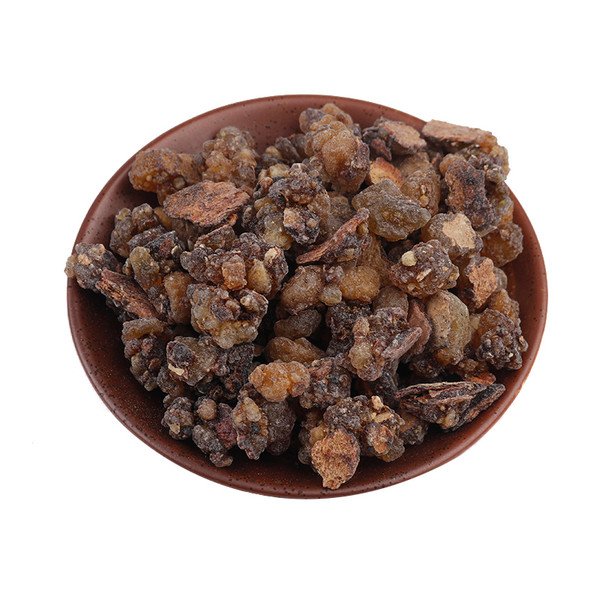Product Overview
Parts used: An aromatic resin obtained from boswellia trees
TCM category: Herbs that invigorate the Blood
TCM nature: Warm
TCM taste(s): Bitter Pungent
Meridian affinity: Spleen Heart Liver
Scientific name: Boswellia sacra resin, Boswellia serrata resin
Use of frankincense (Ru Xiang) in TCM
Please note that you should never self-prescribe TCM ingredients. A TCM ingredient is almost never eaten on its own but as part of a formula containing several ingredients that act together. Please consult a professional TCM practitionner, they will be best able to guide you.
Preparation: Cut the tree barks and wait for the resin to appear. Dry the obtained resin.
Dosage: 3 - 9 grams
Main actions according to TCM*: Moves Blood and Qi and relieves pain. Disperses Wind-Damp from the Meridians and relaxes the sinews. Reduces swelling and aids in wound healing.
Primary conditions or symptoms for which frankincense may be prescribed by TCM doctors*: traumatic bleeding Traumatic swelling Sores Carbuncles Ulcers Dysmenorrhea Abdominal pain
Contraindications*: This herb should not be used by pregnant women and should be used with caution by those with Spleen Deficiency.
Common TCM formulas in which frankincense are used*:
For external application on injuries with bleeding combine frankincense with tienchi ginseng (San Qi).
For joint pains caused by Wind-Damp obstruction combine frankincense with gastrodia rhizomes (Tian Ma) and szechuan lovage roots (Chuan Xiong).
For swollen glands combine frankincense with honeycomb (Feng Fang), forsythia fruits (Lian Qiao), fritillary bulbs (Chuan Bei Mu) and heal-all spikes (Xia Ku Cao).
Key TCM concepts behind frankincense (Ru Xiang)'s properties
In Traditional Chinese Medicine (TCM), frankincense are plants that belong to the 'Herbs that invigorate the Blood' category. Like the name indicates these herbs tend to stimulate the Blood flow. In TCM they're used to help the circulation of Blood in cardiovascular conditions or menstrual irregularities as well as to treat acute pains caused by Blood Stagnation. They can also be used to treat Blood Stasis in the case of certain tumors, cysts and hardened clots.
Furthermore frankincense are plants that are Warm in nature. This means that frankincense tend to help people who have too much "cold" in their body, although with less effect than a plant that would be Hot in nature. Balance between Yin and Yang is a key health concept in TCM. Those who have too much cold in their body are said to either have a Yin excess (because Yin is Cold in nature) or a Yang deficiency (Yang is Hot in Nature). Depending on your condition frankincense can help restore a harmonious balance between Yin and Yang.
Frankincense also taste Bitter and Pungent. The so-called "five elements" theory in Chinese Medicine states that the taste of TCM ingredients is a key determinant of their action in the body. Bitter ingredients like frankincense tend to have a cleansing action on the body by clearing heat, drying dampness and promoting elimination via urination or bowel movements. On the other hand Pungent ingredients tend to promote the circulations of Qi and body fluids. That's why for instance someone tends to sweat a lot when they eat spicy/pungent food.
The tastes of ingredients in TCM also determine what organs and meridians they target. As such frankincense are thought to target the Spleen, the Heart and the Liver. In TCM the Spleen assists with digestion, blood coagulation and fluid metabolism in the body. In addition to regulating blood flow, the Heart is believed to be the store of the "spirit" which basically refers to someone's vitality. The Liver is often referred as the body's "general" because it is in charge of regulating the movements of Qi and body fluids. It also takes a leading role in balancing our emotions.







